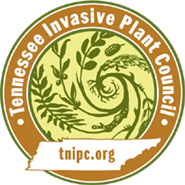Lespedeza bicolor Turcz.
Bicolor Lespedeza, Shrubby Bushclover, Shrubby Lespedeza| Threat Level | Category |
|---|---|
| Established | Shrub |
|
Similar Species May be confused with the following native and/or non-native species. Landscape Alternatives lists native horticultural substitutes |
Landscape Alternatives |
|---|

Description
Height
Bicolor Lespedeza is a much-branched, perennial, leguminous forb or ascending shrub, 3 to 10 feet (1 to 3 m) in height. Dormant brown plants remain upright most of the winter.Stem
Stems are arching and branched, upright-to-ascending, 0.2 to 0.8 inch (0.5 to 2 cm) in diameter from a woody rootcrown. They are often gray green in color with varying degrees of hairiness from smooth to having appressed hairsLeaves
Alternate leaves have three-leaflet. Each leaflet is elliptic to ovate with a hairlike tip, 0.8 to 2 inches (2 to 5 cm) long and 0.4 to 1.2 inches (1 to 3 cm) wide. Lower leaf surfaces are lighter green than the upper surface. Petioles are 0.8 to 1.6 inches (2 to 4 cm) long, and the stipules are narrowly linear, 0.04 to 0.3 inch (1 to 8 mm) long.Flowers
June to September. Clusters (racemes) 4 to 6 inches (10 to 15 cm) long are each subtended by a tiny ovate bract. Racemes have 5 to 15 well-spaced, pealike flowers. Each flower is 0.3 to 0.4 inch (8 to 11 mm) long, growing from upper leaf axils and beyond the upper leaves. Petals are usually rosy purple in center and often grade to lighter shades, but can vary to white. Calyx (sepals) is sparsely to very hairy with lobes 0.1 to 0.2 inch (2.5 to 4.5 mm) long.Fruit and seeds
Flat, broadly elliptic, legume pods, 0.2 to 0.3 inch (6 to 8 mm) long, are visible August to March, with a pointed hairlike tip. They are green becoming gray and densely appressed hairy. Each pod contains a single black seed 0.12 to 0.16 inch (3 to 4 mm) long.Images
Photo: James H. Miller, USDA Forest Service, Bugwood.orgMore images of Lespedeza bicolor
Life History
Bicolor Lespedeza is a perennial, much branched, leguminous forb or ascending shrub, 3 to 10 feet (1 to 3 m) in height with three-leaflet leaves, many small purple-to-white pea flowers, and single-seeded pods from a woody rootcrown. Dormant brown plants remain upright most of the winter. It has been used for ornamental plantings, wildlife food, and soil stabilization and improvement due to its ability to fix nitrogen. It is in the Fabaceae or Pea family.Ecology and Habitat
Bicolor Lespedeza was planted widely in forest openings for wildlife food plots and soil stabilization, which later encroached into adjoining stands. It reproduces and spreads even under a medium-to-dense overstory. Spread is encouraged by burning.Origin and Distribution
Introduced from Japan as an ornamental in the late 1800s. Laterprograms promoted its use for wildlife food and soil stabilization and improvement. It is still planted for quail food plots.
Other states where invasive: GA, IN, KY, VA.
Source: Information on this plant page is derived primarily from James H. Miller's Nonnative Invasive Plants of Southern Forests, USDA Forest Service.
Management Recommendations
3. Herbicidal ControlsFoliar Spray Method
Thoroughly wet all leaves with one of the following herbicides in water with a surfactant (July to September): Triclopyr as a 2-percent solution (8 ounces per 3-gallon mix), Escort at three-fourths of an ounce per acre (0.2 dry ounces per 3-gallon mix), Transline†as a 0.2-percent solution (1 ounce per 3-gallon mix), a glyphosate herbicide as a 2-percent solution (8 ounces per 3-gallon mix), or Velpar L as a 2-percent solution (8 ounces per 3-gallon mix).Mowing 1 to 3 months before herbicide applications can assist control.
Seeds of both Lespedeza bicolor and Lespedeza cuneata are long lived in the soil seed bank and require long-term monitoring after control treatments.
Prescribed burning can promote spread of the infestation margins.
Nontarget plants may be killed or injured by root uptake.
†Transline controls a narrow spectrum of plant species.
